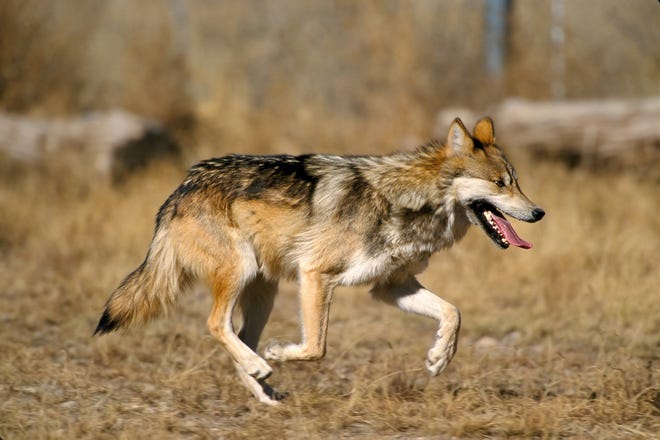[ad_1]
MADRID, Jun 17 (IPS) – In addition to slave selling and buying deals in public squares, as reported time ago in ‘liberated’ Libya, a widespread exploitation of men, women, and children has been carried out for years at refugee camps worldwide.
One of them is a Malawi refugee camp, where such inhumane practice has been reported by the UN Office of Drugs and Crime (UNODC) and the Malawian Police Service.
“I even witnessed a kind of Sunday market, where people come to buy children who were then exploited in situations of forced labour and prostitution,” on 11 June said UNODC’s Maxwell Matewere.
The Dzaleka Refugee Camp, the largest in Malawi, was established in 1994 and is home to more than 50,000 refugees and asylum seekers from five different countries. It was originally designed to accommodate 10,000 people.
Most of the 90 victims so far rescued are men from Ethiopia, aged between 18 and 30, while there are also girls and women too, aged between 12 and 24 from Ethiopia, Burundi, and the Democratic Republic of Congo (DRC).
A trafficking processing hub
The UNODC report also explains that women and girls are exploited sexually inside the Dzaleka refugee camp, or transported for the purpose of sexual exploitation to other countries in Southern Africa, while male refugees are being subjected to forced labour inside the camp or on farms in Malawi and other countries in the region.
The camp is also being used as a hub for the processing of victims of human trafficking. Traffickers recruit victims in their home country under false pretences, arrange for them to cross the border into Malawi and enter the camp.
Everywhere
Other refugee camps, like the Rohingya ones in Myanmar, which host up to one million humans, are also being under scrutiny.
Add to this millions more of humans falling easy prey to traffickers and smugglers, victims of wars on Afghanistan, Iraq, Syria, and Yemen, not to mention around six million Palestinian refugees.
A whole continent on the move
Ever greater numbers of vulnerable people are risking their lives on dangerous migration routes in Latin America, forced to move by the global food security crisis spiralling inflation, the UN World Food Programme (WFP) said ahead of 2022 World Refugee Day.
“We are having countries like Haiti with 26% food inflation and we have other countries that really are off the charts even with food inflation,” said Lola Castro, WFP Regional Director in Latin America and the Caribbean (LAC).
The dramatic deterioration in people’s daily lives has given them little option but to leave their communities and head north, even if it means risking their lives, she explained.
“All of you are watching caravans, caravans of migrants moving, and before we used to talk about migration happening from the north of Central America, but now, unfortunately, we talk about migration being hemispheric. We have the whole continent on the move.”
The Darien Gap
One of the clearest signs of people’s desperation is the fact that they are willing to risk their lives crossing the Darien Gap, a particularly arduous and dangerous forest route in Central America that allows access from the south of the continent to the north.
“In 2020, 5,000 people passed by the Darien Gap, migrating from South America into Central America, and you know what, in 2021, 151,000 people passed, and this is 10 days walking through a forest, 10 days through rivers, crossing mountains and people die because this one of most dangerous jungles in the world.”
For these migrants the reason why they are on the move is simple, the WFP official explained: “They are leaving communities where they have lost everything to climate crisis, they have no food security, they have no ability to feed their people and their families.”
UN data indicates that of the 69 economies now experiencing food, energy and financial shocks, 19 are in the Latin America and the Caribbean region.
Highest ever number of displaced children
Conflict, violence and other crises left a record 36.5 million children displaced from their homes at the end of 2021, UNICEFestimates – the highest number recorded since the Second World War.
This figure, which was reported by UNICEF on 17 June, includes 13.7 million refugee and asylum-seeking children and nearly 22.8 million children who are internally displaced due to conflict and violence.
These figures do not include children displaced by climate and environmental shocks or disasters, nor those newly displaced in 2022, including by the war in Ukraine.
20 people on the run… every minute
Every minute 20 people leave everything behind to escape war, persecution or terror, according to UNHCR.
But while the world’s specialised bodies have been making legal distinctions between migrants, refugees, asylum seekers, internally displaced persons, stateless people, retruerness, etcetera, the fact is that all of them are victims of stargeering inhuman suffering.
100 million… for now
At the end of 2021, the total number of people worldwide who were forced to flee their homes due to conflicts, violence, fear of persecution and human rights violations was 89.3 million, the UN Refugee Agency (UNHCR) reported ahead of this year’s World Refugee Day annual marked 20 June.
Armed conflicts in 23 countries
If ongoing conflicts remain unresolved and the risks of new ones erupting are not reined in, one aspect that will define the twenty-first century will be the “continuously growing numbers of people forced to flee and the increasingly dire options available to them.”
Regarding the conflict-driven wave of forced displacement, UNHCR citing World Bank data, reports that in all, 23 countries with a combined population of 850 million faced “medium or high-intensity conflicts.”
Poor countries host 4 in 5 refugees
Data from the UNHCR report underscored the crucial role played by the world’s developing nations in sheltering displaced people, with low and middle-income nations hosting more than four in five of the world’s refugees.
With 3.8 million refugees within its borders, Turkey hosts the largest number of refugees, followed by Colombia, with 1.8 million (including Venezuelan nationals), Uganda and Pakistan (1.5 million each) and Germany (1.3 million).
Relative to their national populations, the Caribbean island of Aruba hosted the largest number of Venezuelans displaced abroad (one in six), while Lebanon hosted the largest number of refugees (one in eight), followed by Curaçao (one in 10), Jordan (one in 14) and Turkey (one in 23).
All the above adds to the specific case of the increasing number of victims of climate change, on whom IPS has already reported in its: What Would Europe, the US, Do with One Billion Climate Refugees?
Not new, Europeans have largely traded in humans
Such horrifying practice was intensively widespread more than four centuries ago, mostly by European powers, who captured, chained and shipped millions of Africans to their descents’ country: the United States of America, as well to their colonies in Latin America and the Carribeans.
Just see what the UN secretary general, António Guterres, stated In his message on last year’s International Day of Remembrance of the Victims of Slavery and the Transatlantic Slave Trade.
Today “we honour the memory of the millions of people of African descent who suffered under the brutal system of slavery and the transatlantic slave trade”.
This trade created and sustained a global system of exploitation that existed for more than 400 years, devastating families, communities and economies, the UN chief stated.
We remember with humility the resilience of those who endured the atrocities committed by slave traders and owners, condoned by slavery’s beneficiaries, added Guterres.
“The transatlantic slave trade ended more than two centuries ago, but the ideas of white supremacy that underpinned it remain alive.”
© Inter Press Service (2022) — All Rights ReservedOriginal source: Inter Press Service
[ad_2]
Source link













